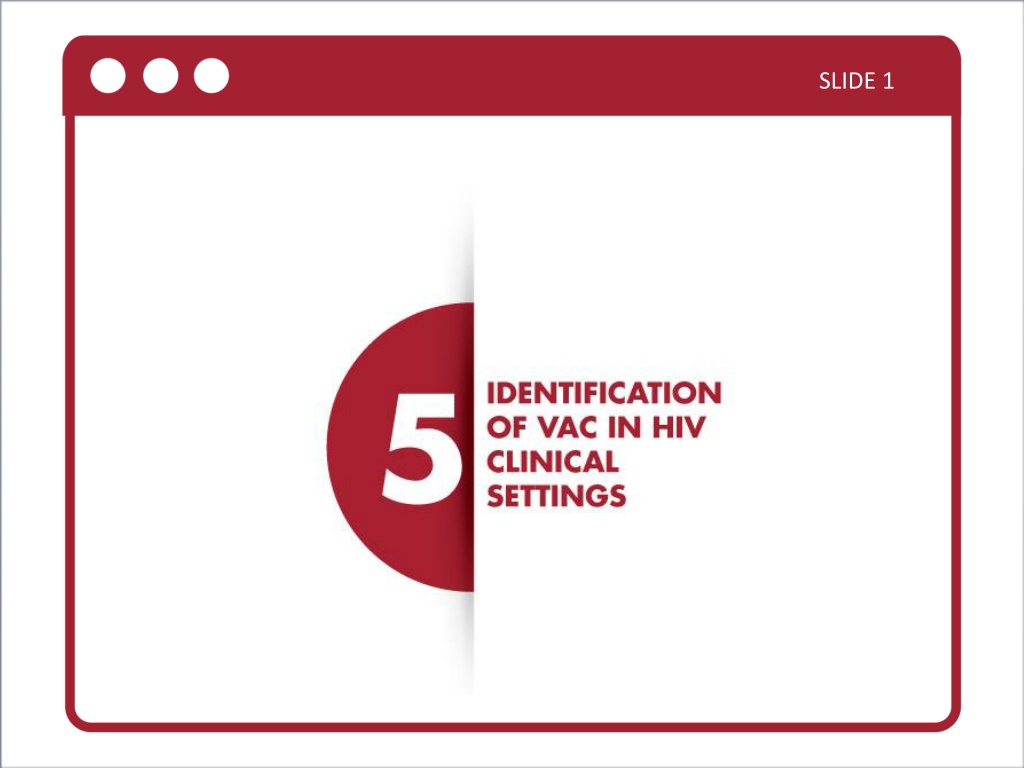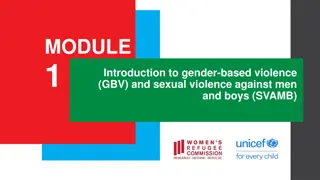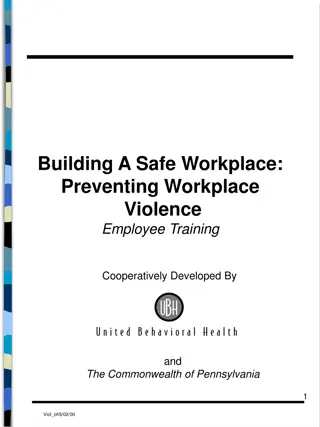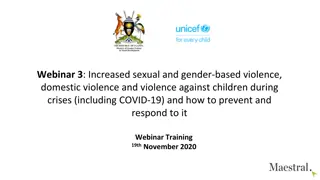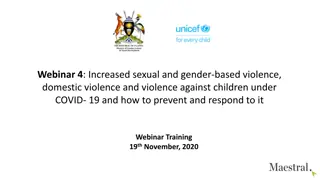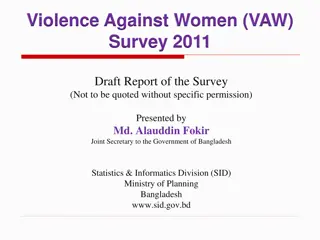Child Violence Awareness Module
This module focuses on equipping healthcare workers with the skills to identify and support children at risk of violence. It covers the importance of disclosure, reasons for non-disclosure, and introduces the Child Protection Enquiry Tool (CPET) to aid in recognizing signs of violence in children. Strategies to create a safe environment for children to disclose violence are also discussed.
Download Presentation

Please find below an Image/Link to download the presentation.
The content on the website is provided AS IS for your information and personal use only. It may not be sold, licensed, or shared on other websites without obtaining consent from the author. Download presentation by click this link. If you encounter any issues during the download, it is possible that the publisher has removed the file from their server.
E N D
Presentation Transcript
SLIDE 2 LEARNING OUTCOMES At the end of this module, you should: Attain or increase skills to enable you to identify children who are at risk of or are experiencing any form of violence.
SLIDE 3 DISCLOSURE OF VIOLENCE BY CHILDREN Disclosure is when a child who has is experiencing or has experienced violence tells a person about the experience. This can be to a health worker or other individual. The majority of children who experience violence do not disclose the experience to anyone.
SLIDE 4 DISCUSS (10 MINUTES) What are the common reasons for children to disclose violence to health workers? What are the common reasons for children to not disclose violence to health workers?
SLIDE 5 REASONS FOR NON-DISCLOSURE OF VIOLENCE BY CHILDREN
SLIDE 6 What can you do in your workplace to support children to safely disclose violence?
SLIDE 7 INTRODUCTION TO THE CHILD PROTECTION ENQUIRY TOOL (CPET) The CPET IS a tool that: is designed to help the health worker look out for and recognize signs that the child may be at risk of or has experienced violence, during a standard consultation; provides a set of simple questions that the healthcare providers can ask the child and/ or caregivers to ascertain whether the child requires referral for further violence support and services. The tool was developed in response to request for tools to help explore potential violence. It is based on global child violence research tools. It has not been validated yet.
SLIDE 8 INTRODUCTION TO THE CHILD PROTECTION ENQUIRY TOOL (CPET) There are two tools: 0-5 years and 6-18 years. The 0-5 age group tool is delivered to caregivers. The 6-18 age group tool may be delivered to caregivers but ideally to the child, especially for adolescents. The 6-18 age group tool will be used differently for different ages: The way the questions are asked will be different for different ages. The answers will be provided differently for different ages. The basic information that you want to find out will be the same, regardless of age.
SLIDE 10 STEPS FOR ADMINISTERING THE CPET 1. Ideally, interview the child alone (if they are old enough) 2. Use all the techniques from Module 5 on SOLER,Sitting position, Open posture, Lean forward, Eye contact, Relaxed 3. Introduce yourself 4. Build rapport by talking to a child for a few minutes about school or who they live with, to make the child feel more comfortable with you 5. Explain the rules of the interview
SLIDE 11 STEPS FOR ADMINISTERING THE CPET 6. Transition to the open-ended questions about abuse 7. Stay silent if they don t answer immediately 8. Only ask enough questions to know what medical treatment they need and whether they are safe to return home today 9. What to say when a child become quiet and they look afraid: a. Acknowledge their fear b. Explore their fear (sensitively) c. Educate
SLIDE 12 KEY CONSIDERATIONS FOR INTRODUCTION OF CPET AT HEALTH FACILITIES Health facilities should introduce the use of the CPET ONLY after ensuring that health care providers: can provide child survivors safety, privacy and confidentiality have the appropriate attitudes and skills are able to offer immediate violence response services and appropriate referrals.
SLIDE 13 ACTIVITY 3 FEEDBACK Was the CPET tool easy or difficult to apply? What challenges did you encounter while utilizing the tool? How would you overcome some of the challenges? What resources would you require in order to use the CPET effectively?
SLIDE 15 SUMMARY It can be used at any point of contact with child It can be used by different cadres of health care providers, as well as noon clinical service providers The questions in the CPET are deliberately designed to be general and non-invasive They are formulated to aid the healthcare providers get more details in cases where they suspect risk of or have experienced violence. Any child who gives a positive response to any questions in the tool should be appropriately referred for more specific diagnostic tests and services.
